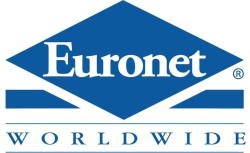Trinseo (NYSE: TSE) and Rogers (NYSE:ROG) are both mid-cap basic materials companies, but which is the better investment? We will compare the two companies based on the strength of their institutional ownership, analyst recommendations, risk, profitability, earnings, valuation and dividends.
Institutional and Insider Ownership
Get Trinseo alerts:97.0% of Trinseo shares are held by institutional investors. Comparatively, 93.8% of Rogers shares are held by institutional investors. 0.3% of Trinseo shares are held by insiders. Comparatively, 1.5% of Rogers shares are held by insiders. Strong institutional ownership is an indication that endowments, large money managers and hedge funds believe a company will outperform the market over the long term.
Volatility and Risk
Trinseo has a beta of 2.3, indicating that its share price is 130% more volatile than the S&P 500. Comparatively, Rogers has a beta of 1.51, indicating that its share price is 51% more volatile than the S&P 500.
Valuation and Earnings
This table compares Trinseo and Rogers’ revenue, earnings per share (EPS) and valuation.
| Gross Revenue | Price/Sales Ratio | Net Income | Earnings Per Share | Price/Earnings Ratio | |
| Trinseo | $4.45 billion | 0.73 | $328.30 million | $8.13 | 9.25 |
| Rogers | $821.04 million | 2.65 | $80.45 million | $5.76 | 20.55 |
Trinseo has higher revenue and earnings than Rogers. Trinseo is trading at a lower price-to-earnings ratio than Rogers, indicating that it is currently the more affordable of the two stocks.
Dividends
Trinseo pays an annual dividend of $1.44 per share and has a dividend yield of 1.9%. Rogers does not pay a dividend. Trinseo pays out 17.7% of its earnings in the form of a dividend.
Analyst Ratings
This is a summary of recent ratings and recommmendations for Trinseo and Rogers, as reported by MarketBeat.
| Sell Ratings | Hold Ratings | Buy Ratings | Strong Buy Ratings | Rating Score | |
| Trinseo | 0 | 2 | 4 | 0 | 2.67 |
| Rogers | 0 | 0 | 3 | 0 | 3.00 |
Trinseo presently has a consensus price target of $88.60, indicating a potential upside of 17.82%. Rogers has a consensus price target of $151.67, indicating a potential upside of 28.15%. Given Rogers’ stronger consensus rating and higher possible upside, analysts plainly believe Rogers is more favorable than Trinseo.
Profitability
This table compares Trinseo and Rogers’ net margins, return on equity and return on assets.
| Net Margins | Return on Equity | Return on Assets | |
| Trinseo | 7.42% | 59.08% | 13.86% |
| Rogers | 9.56% | 13.71% | 9.34% |
Summary
Trinseo beats Rogers on 9 of the 16 factors compared between the two stocks.
Trinseo Company Profile
 Trinseo S.A., a materials company, manufactures and markets synthetic rubber, latex binders, and plastic products in Europe, the United States, the Asia Pacific, and internationally. The company operates through Latex Binders, Synthetic Rubber, Performance Plastics, Basic Plastics, Feedstocks, and Americas Styrenics segments. The Latex Binders segment offers styrene-butadiene, styrene-acrylate, vinylidene chloride, and butadiene-methacrylate latex products for the commercial and niche carpet markets, as well as performance latex products for the adhesive, building and construction, and technical textile paper markets. The Synthetic Rubber segment provides styrene-butadiene rubber, emulsion styrene-butadiene rubber, nickel polybutadiene rubber, and neodymium polybutadiene rubber for use in tires, modifiers, and technical rubber products. The Performance Plastics segment offers engineered compounds and blend products for the automotive, consumer electronics, medical, electrical, and lighting markets. The Basic Plastics segment provides polystyrene, polycarbonate, acrylonitrile-butadiene-styrene, and styrene-acrylonitrile for use in appliances, food packaging and food service disposables, consumer electronics, and building and construction materials. The Feedstocks segment offers styrene monomer, a basic building block of plastics. The Americas Styrenics segment provides styrene and polystyrene, as well as general purpose polystyrenes, high heat, high impact resin, and STYRON A-TECH polystyrene products. The company's products are also used in carpet and artificial turf backing, coated and specialty paper, and other markets. Trinseo S.A. was founded in 2010 and is headquartered in Berwyn, Pennsylvania.
Trinseo S.A., a materials company, manufactures and markets synthetic rubber, latex binders, and plastic products in Europe, the United States, the Asia Pacific, and internationally. The company operates through Latex Binders, Synthetic Rubber, Performance Plastics, Basic Plastics, Feedstocks, and Americas Styrenics segments. The Latex Binders segment offers styrene-butadiene, styrene-acrylate, vinylidene chloride, and butadiene-methacrylate latex products for the commercial and niche carpet markets, as well as performance latex products for the adhesive, building and construction, and technical textile paper markets. The Synthetic Rubber segment provides styrene-butadiene rubber, emulsion styrene-butadiene rubber, nickel polybutadiene rubber, and neodymium polybutadiene rubber for use in tires, modifiers, and technical rubber products. The Performance Plastics segment offers engineered compounds and blend products for the automotive, consumer electronics, medical, electrical, and lighting markets. The Basic Plastics segment provides polystyrene, polycarbonate, acrylonitrile-butadiene-styrene, and styrene-acrylonitrile for use in appliances, food packaging and food service disposables, consumer electronics, and building and construction materials. The Feedstocks segment offers styrene monomer, a basic building block of plastics. The Americas Styrenics segment provides styrene and polystyrene, as well as general purpose polystyrenes, high heat, high impact resin, and STYRON A-TECH polystyrene products. The company's products are also used in carpet and artificial turf backing, coated and specialty paper, and other markets. Trinseo S.A. was founded in 2010 and is headquartered in Berwyn, Pennsylvania.
Rogers Company Profile
 Rogers Corporation designs, develops, manufactures, and sells engineered materials and components worldwide. The company's Advanced Connectivity Solutions segment offers circuit materials and solutions for connectivity applications in wireless communications infrastructure, automotive, connected devices, wired infrastructure, consumer electronics, and aerospace/defense. Its Elastomeric Material Solutions segment provides elastomeric material solutions for critical cushioning, sealing, impact protection, and vibration management applications, including general industrial, portable electronics, consumer goods, automotive, mass transportation, construction, and printing applications. The company's Power Electronics Solutions segment offers ceramic substrate materials for power module applications, laminated bus bars for power inverter and high power interconnect applications, and micro-channel coolers. Its Other segment provides elastomeric components for applications in ground transportation, office equipment, consumer, and other markets; elastomer floats for level sensing in fuel tanks, motors, and storage tanks; and inverters for portable communications and automotive markets. The company also manufactures and sells polytetrafluoroethylene, ultra-high molecular weight polyethylene films, pressure sensitive tapes, and specialty products for the industrial, aerospace, automotive, and electronics markets. Rogers Corporation was founded in 1832 and is headquartered in Chandler, Arizona.
Rogers Corporation designs, develops, manufactures, and sells engineered materials and components worldwide. The company's Advanced Connectivity Solutions segment offers circuit materials and solutions for connectivity applications in wireless communications infrastructure, automotive, connected devices, wired infrastructure, consumer electronics, and aerospace/defense. Its Elastomeric Material Solutions segment provides elastomeric material solutions for critical cushioning, sealing, impact protection, and vibration management applications, including general industrial, portable electronics, consumer goods, automotive, mass transportation, construction, and printing applications. The company's Power Electronics Solutions segment offers ceramic substrate materials for power module applications, laminated bus bars for power inverter and high power interconnect applications, and micro-channel coolers. Its Other segment provides elastomeric components for applications in ground transportation, office equipment, consumer, and other markets; elastomer floats for level sensing in fuel tanks, motors, and storage tanks; and inverters for portable communications and automotive markets. The company also manufactures and sells polytetrafluoroethylene, ultra-high molecular weight polyethylene films, pressure sensitive tapes, and specialty products for the industrial, aerospace, automotive, and electronics markets. Rogers Corporation was founded in 1832 and is headquartered in Chandler, Arizona.
 Euronet Worldwide, Inc. provides payment and transaction processing and distribution solutions to financial institutions, retailers, service providers, and individual consumers worldwide. The company operates in three segments: Electronic Financial Transaction (EFT) Processing, epay, and Money Transfer. The EFT Processing segment provides electronic payment solutions, including automated teller machine (ATM) cash withdrawal and deposit services, ATM network participation, outsourced ATM and point-of-sale (POS) management solutions, credit and debit card outsourcing, card issuing, and merchant acquiring services. This segment also offers ATM and POS dynamic currency conversion, advertising, customer relationship management, mobile top-up, bill payment, fraud management, and foreign remittance payout services; and integrated EFT software solutions for electronic payments and transaction delivery systems. As of December 31, 2017, it operated a network of 37,133 ATMs; and approximately 248,000 EFT POS terminals. The epay segment provides distribution, processing, and collection services for prepaid mobile airtime and other electronic payment products; and vouchers and physical gift fulfillment, and gift card distribution and processing services. This segment operated a network of approximately 707,000 POS terminals. The Money Transfer segment provides consumer-to-consumer money transfer services primarily under the Ria, AFEX Money Express, and IME brands; account-to-account money transfer services under the HiFX and xe brands; customers bill payment services; payment alternatives, such as money orders and prepaid debit cards; check cashing services; foreign currency exchange and mobile top-up services; and cash management and foreign currency risk management services. The company was formerly known as Euronet Services, Inc. and changed its name to Euronet Worldwide, Inc. in August 2001. Euronet Worldwide, Inc. was founded in 1994 and is headquartered in Leawood, Kansas.
Euronet Worldwide, Inc. provides payment and transaction processing and distribution solutions to financial institutions, retailers, service providers, and individual consumers worldwide. The company operates in three segments: Electronic Financial Transaction (EFT) Processing, epay, and Money Transfer. The EFT Processing segment provides electronic payment solutions, including automated teller machine (ATM) cash withdrawal and deposit services, ATM network participation, outsourced ATM and point-of-sale (POS) management solutions, credit and debit card outsourcing, card issuing, and merchant acquiring services. This segment also offers ATM and POS dynamic currency conversion, advertising, customer relationship management, mobile top-up, bill payment, fraud management, and foreign remittance payout services; and integrated EFT software solutions for electronic payments and transaction delivery systems. As of December 31, 2017, it operated a network of 37,133 ATMs; and approximately 248,000 EFT POS terminals. The epay segment provides distribution, processing, and collection services for prepaid mobile airtime and other electronic payment products; and vouchers and physical gift fulfillment, and gift card distribution and processing services. This segment operated a network of approximately 707,000 POS terminals. The Money Transfer segment provides consumer-to-consumer money transfer services primarily under the Ria, AFEX Money Express, and IME brands; account-to-account money transfer services under the HiFX and xe brands; customers bill payment services; payment alternatives, such as money orders and prepaid debit cards; check cashing services; foreign currency exchange and mobile top-up services; and cash management and foreign currency risk management services. The company was formerly known as Euronet Services, Inc. and changed its name to Euronet Worldwide, Inc. in August 2001. Euronet Worldwide, Inc. was founded in 1994 and is headquartered in Leawood, Kansas. Payment Data Systems, Inc., together with its subsidiaries, provides integrated electronic payment processing services to merchants and businesses in the United States. The company offers various types of automated clearing house (ACH) processing; and credit, prepaid card, and debit card-based processing services. Its ACH processing services include Represented Check, a consumer non-sufficient funds check that is represented for payment electronically rather than through the paper check collection system; and Accounts Receivable Check Conversion, a consumer paper check payment, which is converted into an e-check. The company also offers merchant account services for the processing of card-based transactions through the VISA, MasterCard, American Express, Discover, and JCB networks, including online terminal services accessed through a Website or retail services accessed through a physical terminal. In addition, it provides a proprietary Web-based customer service application that allows companies to process one-time and recurring payments through e-checks or credit cards; and an interactive voice response telephone system to companies, which accept payments directly from consumers over the telephone using e-checks or credit cards. Further, the company creates, manages, and processes prepaid card programs for corporate clients to issue prepaid cards to their customer base or employees; and issues general purpose reloadable cards to consumers as an alternative to a traditional bank account. Additionally, it operates billx.com, a consumer Website that allows consumers to process online payments to pay other individual; and provides prepaid cards to consumers for use in as a tool to stay on budget, manage allowances, and share money with family and friends. The company markets and sells its products and services directly, as well as through non-exclusive resellers. Payment Data Systems, Inc. was founded in 1998 and is headquartered in San Antonio, Texas.
Payment Data Systems, Inc., together with its subsidiaries, provides integrated electronic payment processing services to merchants and businesses in the United States. The company offers various types of automated clearing house (ACH) processing; and credit, prepaid card, and debit card-based processing services. Its ACH processing services include Represented Check, a consumer non-sufficient funds check that is represented for payment electronically rather than through the paper check collection system; and Accounts Receivable Check Conversion, a consumer paper check payment, which is converted into an e-check. The company also offers merchant account services for the processing of card-based transactions through the VISA, MasterCard, American Express, Discover, and JCB networks, including online terminal services accessed through a Website or retail services accessed through a physical terminal. In addition, it provides a proprietary Web-based customer service application that allows companies to process one-time and recurring payments through e-checks or credit cards; and an interactive voice response telephone system to companies, which accept payments directly from consumers over the telephone using e-checks or credit cards. Further, the company creates, manages, and processes prepaid card programs for corporate clients to issue prepaid cards to their customer base or employees; and issues general purpose reloadable cards to consumers as an alternative to a traditional bank account. Additionally, it operates billx.com, a consumer Website that allows consumers to process online payments to pay other individual; and provides prepaid cards to consumers for use in as a tool to stay on budget, manage allowances, and share money with family and friends. The company markets and sells its products and services directly, as well as through non-exclusive resellers. Payment Data Systems, Inc. was founded in 1998 and is headquartered in San Antonio, Texas. Shares of Ashland Inc. (NYSE:ASH) hit a new 52-week high and low on Tuesday . The company traded as low as $79.68 and last traded at $78.99, with a volume of 15166 shares traded. The stock had previously closed at $78.71.
Shares of Ashland Inc. (NYSE:ASH) hit a new 52-week high and low on Tuesday . The company traded as low as $79.68 and last traded at $78.99, with a volume of 15166 shares traded. The stock had previously closed at $78.71. Tim Melvin
Tim Melvin …or a biotech company that could "change the world," even though the odds of successfully betting on a biotech firm hitting that jackpot are extremely small…
…or a biotech company that could "change the world," even though the odds of successfully betting on a biotech firm hitting that jackpot are extremely small…